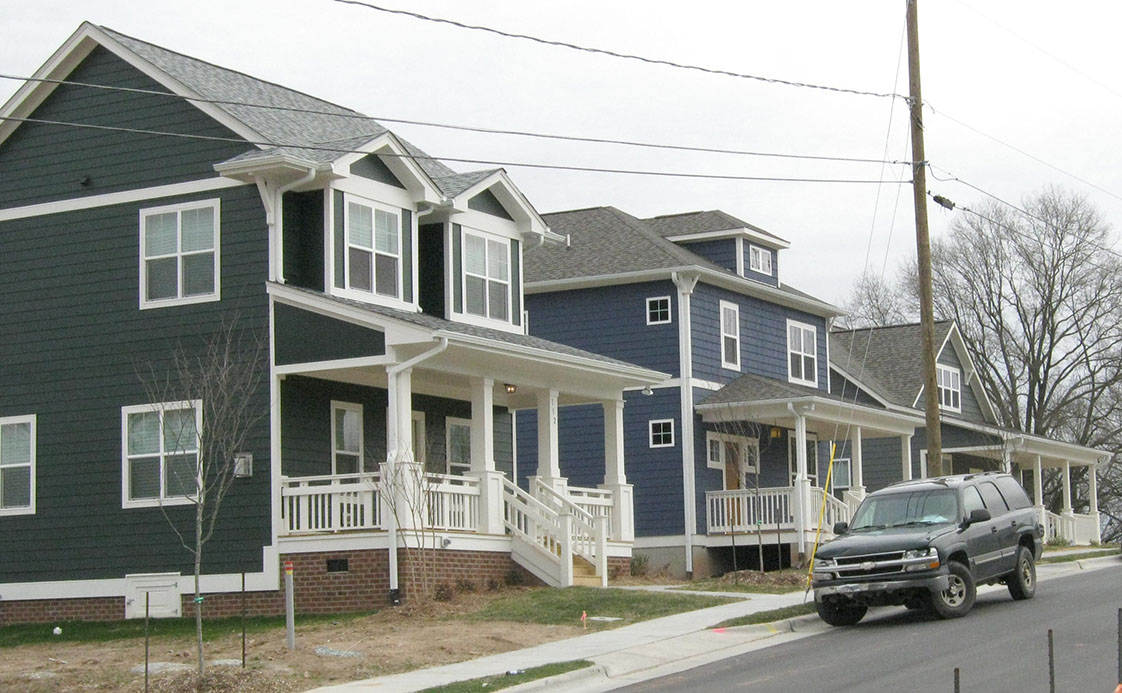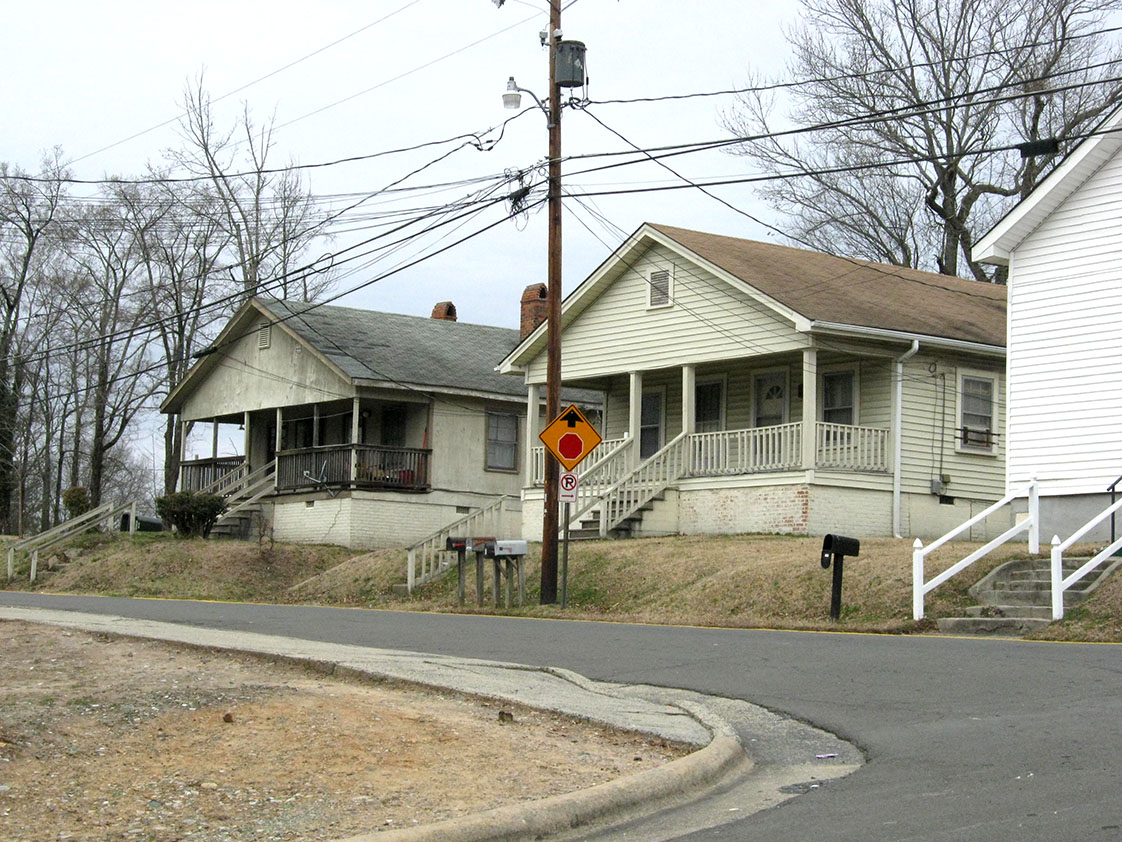Marie Hunter has lived in the Southside neighborhood for more than 60 years.
She said remembers when it was called St. Teresa and was full of family homes with children playing in the yard.

Marie Hunter sits in her newly renovated home on Scout Drive. She has been a member of the community for decades.
But that’s no longer the case.
“I just get tired of people saying bad things,” she said. “They put a bad mark on the community.”
The area is now mostly known for its descent into disinvestment, its abandoned houses and its high crime rate.
Hunter’s own son was killed in a drive-by shooting in 1997 while standing on the front lawn of Happy Rock Unity Holy Church at the corner of Scout Drive and West Enterprise Street.
Southside is an area of about 100 acres south of the Durham Freeway and northwest of North Carolina Central University. To the right of Southside across Roxboro Street is a 20-acre site formerly known as Rolling Hills.

Several of the brand new homes are located off of South Street. The city of Durham is hoping to create a stable community for its residents.
Both are within the Hayti district, a historically black neighborhood that experienced crippling demolition in the 1960s due to the construction of the Durham Freeway.
Hunter, who serves as the president of the Southside Neighborhood Association, said the Southside name began to catch on in the late 1980s, and when the old residents moved out and new ones moved in, trouble started to brew.
“People come and go,” she said. “The history of our neighborhood has died out.”
Reginald Johnson, director of the city of Durham’s Community Development Department, said the city decided to step in and look for a developer to improve the neighborhood in the early 2000s after failed attempts at development in the 1980s and 1990s.
He said the city selected McCormack Baron Salazar, a national community development company out of St. Louis, Missouri, to head the redevelopment because of the company’s experience in urban areas.
Before development began, Johnson said the city spent years buying out about 40 individual owners within the area.
McCormack Baron Salazar came up with the idea to use low-income housing tax credits to fund part of the three-phase project, he said.
The first phase of construction officially began in 2012.
The Rolling Hills site is now home to 132 units of mixed income apartments, also known as the Lofts at Southside. All of the 12 buildings are ready to lease, except for Building 2, which is expected to reach completion this spring.
Thirty-nine of the units will be available at market rates, but 20 units will be reserved affordable housing for families earning 30 percent or less of the area’s median income.
“We asked for this,” Hunter said. “We could see that it’s an impact on the neighborhood.”
To attract private investors, the Lofts will also include an exercise room, picnic areas and a swimming pool.

Repaired homes and homes in need of renovation stand side by side on West Enterprise Street, a common sight in the Southside neighborhood.
Johnson said the idea is to offer affordable housing while also providing enough incentive for private investors to buy units or build homes.
“People will come to the neighborhood because they picked it,” he said.
The city is also looking to encourage home ownership with 48 new houses as part of The Bungalows at Southside and with the renovation of old homes in the area—including Hunter’s.
The city has hired B. Wallace Design and Construction of Durham and general contractor Andrew Roby of Charlotte to build the homes, Johnson said.
Jared Pone, Southside outreach community coordinator with the Community Development Department, said this portion of the project is nearing completion with about 10 of the 48 houses left to complete.
Pone said his goal is to create one Southside—one neighborhood—in the area.
“Part of this from our standpoint is this is more than just building houses,” Johnson said. “Strong neighborhoods make strong cities.”
Although the project comes with a hefty price tag with the Lofts costing more than $20 million alone, Johnson said it’s all worth it if the city can create a stable neighborhood that will eventually be able to stand on its own.
“Overall people think it is a movement in the right direction,” Johnson said. “One of the things that we’re hoping to see changed is that people will be even more proud of their neighborhood.”
Hunter is staying positive about the changes and said she hopes to see her beloved community continue on the right path.
“It’s not as bad as it used to be, but it’s not as good as we want it to be,” she said. “I’m not looking to go nowhere. I’m happy.”
For a printer-friendly version of this story, click here.
One thought on “Southside continues to make a comeback”
Comments are closed.